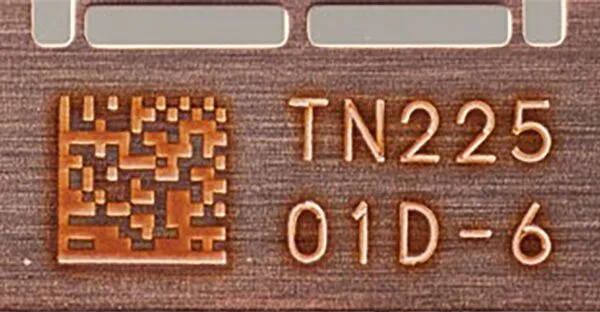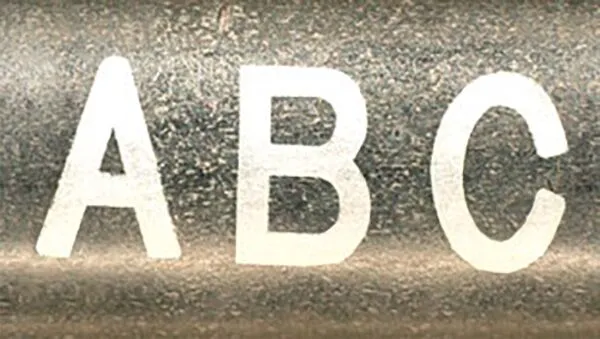When selecting a laser engraver, the decision can be challenging due to the range of options available—each with its unique strengths and limitations. Among the most popular are UV lasers, fiber markers, and CO2 laser engravers. Understanding the nuances of each type is key to determining which one aligns best with your specific needs. In this article, we’ll focus on UV lasers, exploring their capabilities, comparing them with fiber and CO2 lasers, and helping you decide if a UV laser is the right choice for your business.
Is UV the Best Choice for You?
Making the Best Choice
Understanding UV Lasers
UV lasers operate at a wavelength of 355 nm, falling within the ultraviolet spectrum. This shorter wavelength allows UV lasers to create exceptionally precise marks and engravings. Utilizing a “cold marking” process, Boss UV lasers minimize heat impact on the material, significantly enhancing edge detail and overall quality. UV lasers are particularly suited for applications that demand high precision and minimal thermal effects, such as permanent marking on sensitive electrical components.
UV vs. Conventional Lasers

Copper Marking

Copper Marking with UV

Silver Marking

Silver Marking with UV

Key Advantages
- Cold Marking: Ideal for processing heat-sensitive materials; the Heat-Affected-Zone (HAZ) of a CO2 or fiber laser may exceed your application’s requirements. Because of their wavelengths, other lasers can “burn” design edges during processing, usually causing discoloration or slight melting.
- Extreme Precision: A UV laser’s spot size is 30 times smaller than that of a CO2 engraver and 3 times smaller than that of a fiber marker, making it the perfect choice for applications requiring high-quality permanent marking in fine details, such as small part identification numbers, QR codes, and jewelry.
- Material Capability: UV lasers can process combinations of materials not available with a CO2 or fiber machine. For example, a fiber laser marker cannot process clear acrylic or glass. While a CO2 laser can, a UV will deliver finer details without a heat-affected zone.
| APPLICATION | UV LASER | FIBER MARKER | CO2 LASER |
| Stainless Steel – Marking | IDEAL | Yes1 | No2 |
| Clear Acrylic – Engraving | IDEAL | No | Yes |
| Glass Engraving | IDEAL | No | Yes |
| Metals – Permanent Marking | IDEAL | Yes1 | No |
| Nylon – Engraving | IDEAL | Yes3 | Yes4 |
| Electrical Components | IDEAL | Yes3 | Yes4 |
| Medical Implants/Tools | IDEAL | Yes1 | No2 |
1 – UV lasers have a spot size 3x smaller than a fiber marker, making fine details sharper.
2 – CO2 lasers can only mark metals using a marking spray. This process is not considered “permanent” marking, as it can be scraped or sanded off.
3 – UV lasers have a smaller Heat-Affected Zone (HAZ) than fiber lasers. Their “cold-marking” is ideal for engraving heat-sensitive components and delicate materials.
4 – A CO2 laser’s spot size is 30 times larger than that of a UV laser, and the Heat-Affected Zone (HAZ) is considerably larger. For optimum results, a CO2 laser is not recommended on these materials.
UV Limitations
- Metal Engraving: UV lasers cannot deeply engrave metals, making them unsuitable for serial or identification numbers on firearms or other metal parts that require deep engraving.
- Work Area: UV lasers, like fiber markers, have a limited processing area. An open table design allows larger parts to be processed. The Boss UV’s scan area is 160mm x 160mm (6.29″ x 6.29″), more than double the work area of “standard” 110mm x 110mm machines.
Comparing UV Lasers with Fiber and CO2 Lasers
While UV lasers offer several advantages, they are not the only option. Here’s how they compare with fiber markers and CO2 laser engravers:
Fiber Laser Markers:
- Strengths: Powerful and ideal for deep engraving on metals, including stainless steel, aluminum, and brass.
- Limitations: Cannot process glass, clear acrylics, or most organics.
CO2 Lasers:
- Strengths: Can engrave AND cut various non-metallic materials, including wood, acrylic, leather, and fabric.
- Limitations: Metals cannot be engraved. Metal marking requires a spray, which can wear off and is not considered “permanent marking.”
Is a UV Laser Right for You?
To determine if a UV laser is the best choice for your business, consider the following:
Material Compatibility:
If you primarily work with heat-sensitive materials like plastics, glass, or precious metals, a UV laser’s ability to mark without heat damage could be critical.
Precision Requirements:
UV lasers offer unmatched precision for industries where fine detail and high-resolution markings are essential, such as electronics, medical devices, or jewelry.
Application Scope:
If your business requires marking various materials or compliance with strict industry standards, a UV laser’s versatility and precision might be your best bet.
Conclusion
Choosing the ideal laser engraver depends on understanding your needs, the materials you work with, and the precision your applications require. UV lasers offer unique advantages in terms of precision, minimal heat damage, and versatility across various materials. A fiber marker may be the right choice to engrave metals, such as coins or FFA-compliant firearms.
At Boss Laser, we’re here to help you navigate these choices. Whether you’re leaning toward a UV laser or exploring other options, our team can provide expert guidance to ensure you make the best decision for your business needs. Contact us today to discuss your requirements and explore the best laser technology for your application.